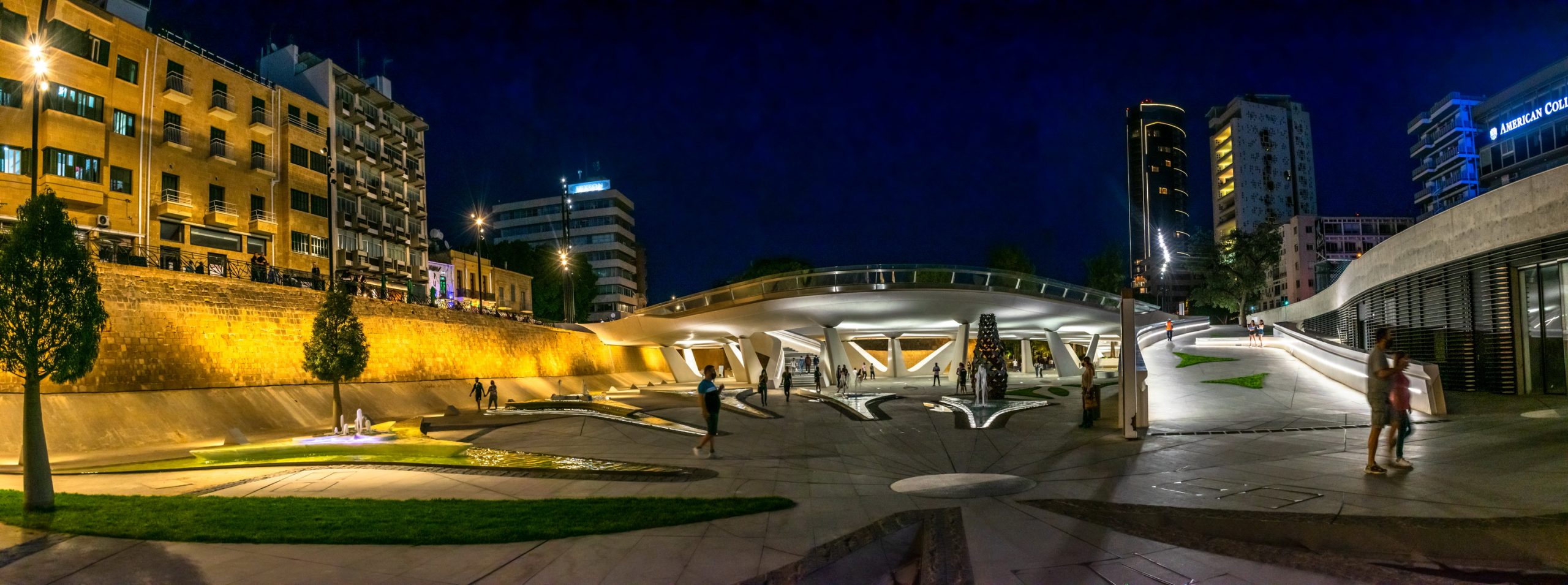Easter in Nicosia, Cyprus, paints a vibrant tapestry of local culture and tradition, inviting both the devout and the curious to partake in its colorful festivities. Flowers bloom, the aroma of warm, fresh pastries fills the air and families get together to attend religious candle-lit processions and communal rituals.
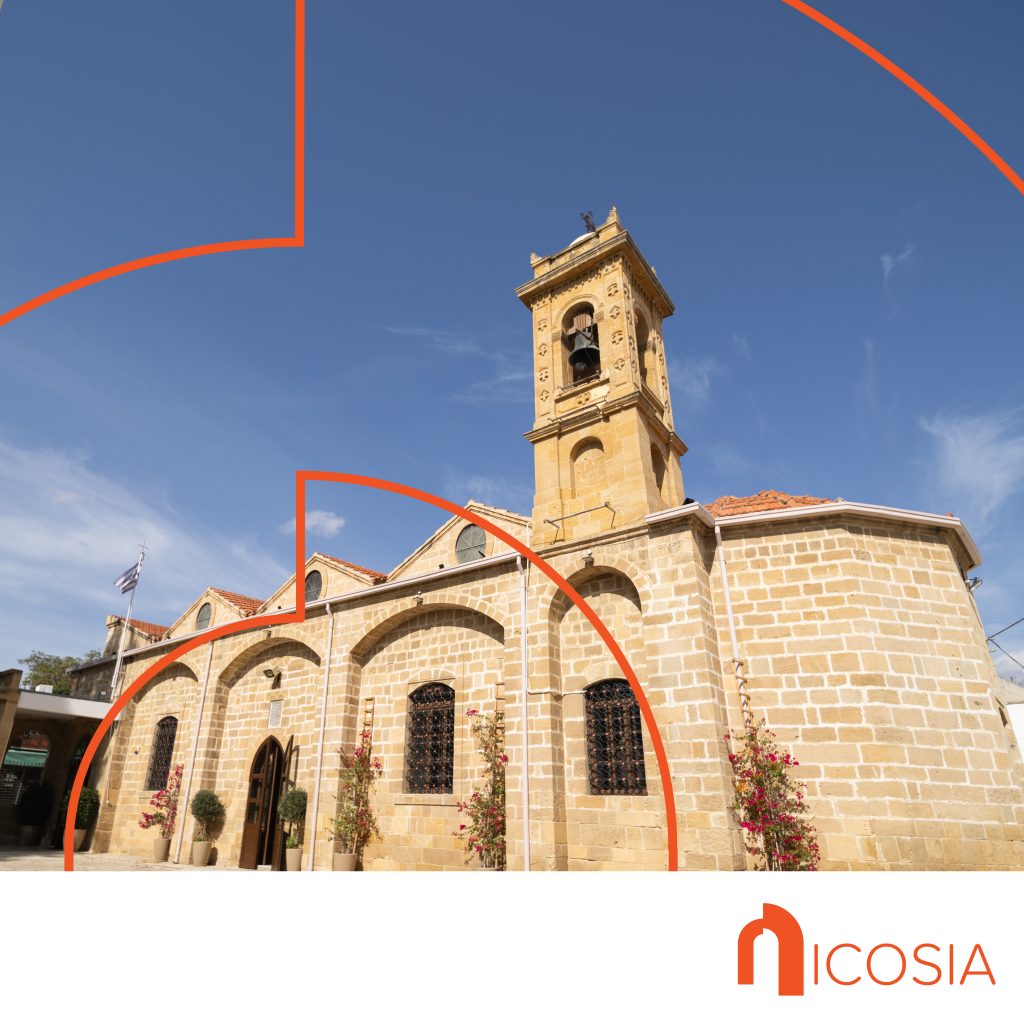
Locals are faithful to their traditions and stick close to the centuries-old customs of the Holy Week, passed down from generation to generation. During Easter, the biggest religious holiday of the island, both the town centre and rural Nicosia come to life and offer abundant Greek Orthodox traditions to experience that always captivate travellers.
Prepare to dive into the heart of Nicosia’s Easter festivities as we explore why this season is a glorious opportunity to experience local life on the bright Mediterranean island.
Indulging in cheesy flaounes
Flaounes are traditional Easter pastries that are a staple of Cypriot households during Holy Week and are unique to Cyprus. Typically, the women of the family get together to prepare a special dough that is filled with a mixture of cheese, eggs and aromatic herbs such as fresh mint. The savory pastries can also have a sweet taste if raisins are added to the filling. The recipe typically takes two days to be completed as families gather to prepare the dough, fill it, fold in the edges with a fork and sprinkle sesame seeds on top.
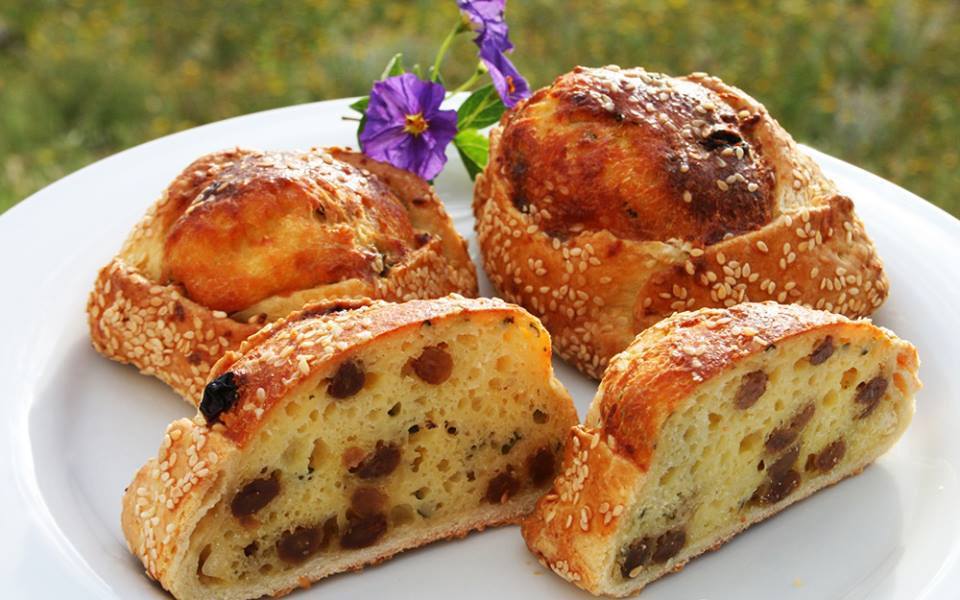
For those fasting, which is customary for the Holy Week, the heavenly smell in every corner of the house has to be ignored until Easter Sunday, the end of Lent, when they can finally devour their flaounes. Any leftover dough is transformed into round biscuits or Easter egg bread holders.
Dyeing Easter eggs
Throughout the week, Cypriots also dye hard-boiled eggs, symbolising new life and the resurrection of Christ. As a widespread tradition in Cyprus, painted Easter eggs decorate the houses and they are usually prepared on Holy Thursday, the day of the Last Supper.
Red is the most common colour representing the blood of Christ yet eggs can be dyed in numerous colours – blue, green, yellow and brown. Onion skins (brown or red), spinach or beets are used to naturally dye the eggs yet contemporary households also use food dye to achieve a bolder colour. Ready-made dyed eggs and flaounes can now be found at bakeries and supermarkets all across town, and although convenient, many locals of all ages still prefer to take on the ritual themselves, keeping tradition alive.
Visiting adorned churches
The capital’s many churches, with one in every neighbourhood, enter their glory season during this time of year. They shine and glimmer and gather people from all walks of life. Easter truly is the best time to visit them and take in their Byzantine charm and detailed iconographies.
On the afternoon of Holy Friday, it is customary for Cypriots to visit several churches and admire the beautifully decorated wooden bier – also known as the Epitaphios in Greek – which symbolizes Christ’s coffin. The night before, women from each parish stay up to decorate it with beautiful fresh, fragrant flowers. The results are truly works of art worth witnessing and each church prides itself in creating the most mesmerizing epitaphios.
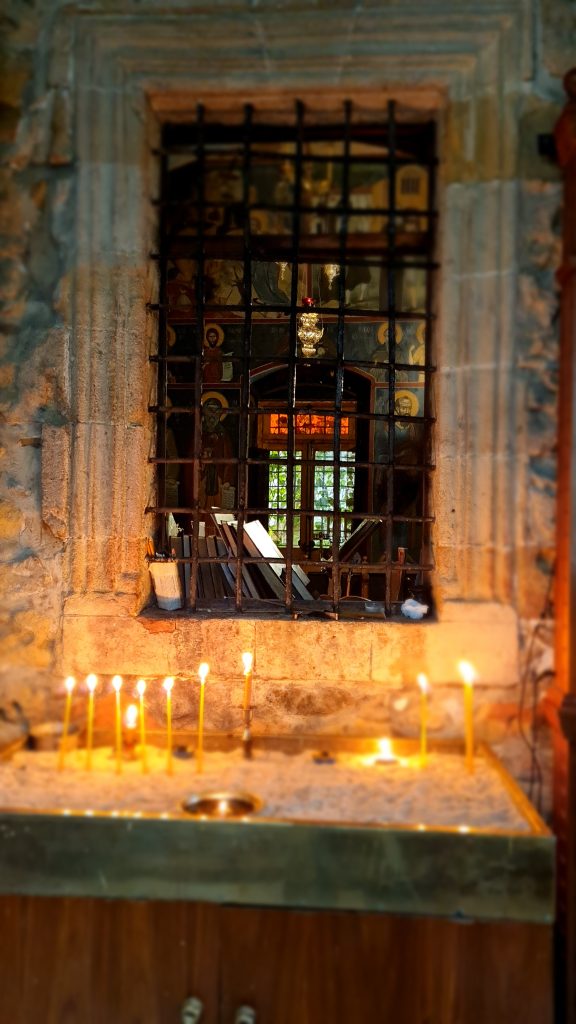
Tradition has it that the faithful visit an odd number of churches on this day (one, three or seven) to worship the epitaphios. Urban legend says that this is less of a religious ritual but more of a folk tradition that began from church communities which would visit the creations of other churches to see which one had the most impressive epitaphios.
The tradition is now deeply rooted in Easter activities on the island and within the old town of Nicosia, there are several churches to visit within walking distance from each other. Worth checking out are the Churches of Panayias Phaneromeni, Chrysaliniotissa, Saint Kassianos, Saint Eleftherios, Saint Savvas, Archangel Michael Trypioti, and Saint Antonios as well as the Apostle Barnabas Cathedral, the St. John’s Cathedral and the tucked away Saint Eleftherios Chapel. Find all of old Nicosia’s important religious sites in this exquisite digital religious brochure. For more detailed maps and brochures, this link has all the downloadable guides.
You don’t have to embark on this modern-day pilgrimage alone however as Visit Nicosia organizes thematic guided tours of old Nicosia. As part of its Religious Tours, this upcoming Easter period will have two Epitaphios walking tours in English, visiting churches in the old town and their decorated wooden biers. Both will take place on Friday, May 3rd, (at 10:00 and again at 15:30) and are offered for free. To register, click here.
Solemn processions in the street
The evening of Holy Friday is when the decorated Epitaphios is carried out of church on neighbourhood processions led by the priest and members of the church and followed by a swarm of people. Each church will host its own procession, singing hymns and prayers. Those living nearby will often stand outside their homes or lean over open windows to witness it. Once back at church, worshippers line up to pay their respects to the Epitaphios and pass underneath it as it is considered a grand blessing.
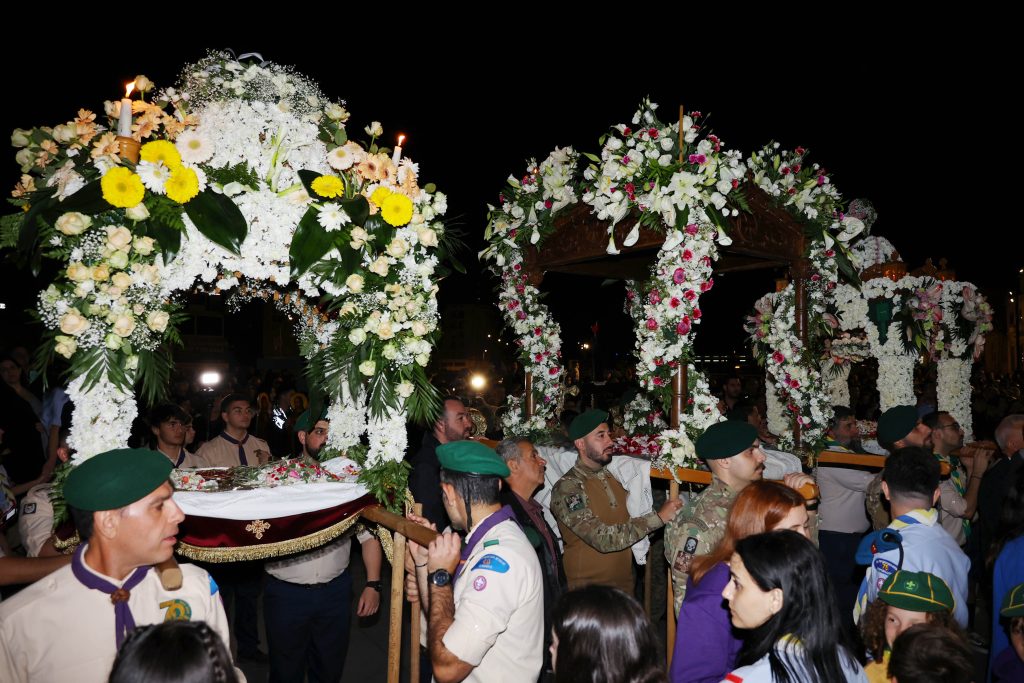
In some church communities, the Epitaphios processions are accompanied by young school girls dressed in white carrying baskets with flowers. They symbolise the myrrh bearers (myrofores in Greek) referring to the women who visited the tomb of Christ after his crucifixion to smear his body with myrrh and spices. The myrofores also play an important role during the church service by dousing the Epitaphios with myrrh fragrances.
Impressive mass services on Holy Saturday
Holy Saturday is the day Christ was resurrected and the whole day pays tribute to this significant transformation. During the early morning mass, the black curtains that covered the church’s iconographies as a symbol of mourning are lifted and church bells ring.
Each church and its priest have its own way of marking the occasion, some embark on rather enthusiastic celebrations where the priest and his church circle run inside the church holding religious flags and splashing holy water from bay leaves. Worshippers celebrate by banging church pews and some choose to break their Lent at this time, queuing up to receive Holy Communion.
The ritual is a thrilling one to witness, loved by locals and visitors alike. Typically, this happens around 7 am or 8 am depending on the church and the charming church of Agios Kasianios, with its lush garden tucked away in the old town streets is renowned for it.
Receiving the Holy Fire at Midnight Mass
The pinnacle of Easter celebrations in Cyprus is the midnight mass on Holy Saturday when crowds gather to commemorate the resurrection of Christ and receive the Holy Fire flown in from Jerusalem. Considered the focal point of the Easter period, the midnight mass gathers heaps of crowds and locals – whether seriously religious or not – who would not miss out on this occasion.
Easter Saturday’s ceremony signals the triumph of light over darkness and so Cypriots tend to wear their best outfits to midnight mass. The church and its courtyard fill with crowds as the community comes together. For many, it is a sacred family time of celebration and an opportunity to mingle with the neighbourhood. Each person arrives with a candle in hand, called lambada, ready to receive the Holy Fire.
Some head to church around 10 pm or 11 pm for mass whilst the bigger crowds are formed outside the church around midnight. Just as the clock hits 12 am, priests step outside for a collective and chilling Easter hymn, the church lights are turned off while the Holy Fire is passed around from person to person. Church bells ring loudly, fireworks might spark, and some stay for the late-night mass which usually lasts until 2 am. This marks the official end of Lent and after the faithful receive their Holy Communion, some priests pass out bites of flaounes.
Witness the great Lambradjia tradition
An anticipated Easter tradition that divides the crowds is the lighting of a large bonfire on Holy Saturday. Weeks before Easter Week begins, boys from each neighbourhood embark on a hunt to collect firewood and large pieces of plank wood to construct a massive bonfire that will be lit on the midnight hours of Holy Saturday as a symbol of burning Judas for betraying Jesus.
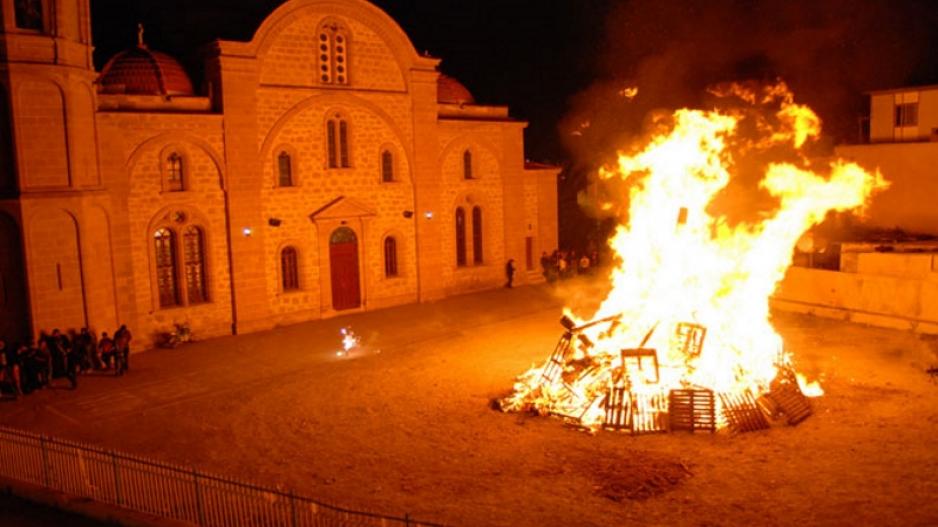
An unspoken competition prevails in the air on which neighbourhood will manage to light the biggest bonfire and although it is a divisive tradition that authorities have tried to put an end to, the tradition remains strong. Many locals will pay a visit to their neighbourhood’s lambradjia after Midnight Mass before they head home for soup.
Breaking Lent with warm soup
After midnight mass, families gather at home for the first post-Lent meal. As they enter the house, they often mark their entrances with a cross from the smoke of their lit candle as a symbol of blessing the family home. Then, they sit down for Easter supper which includes an egg, lemon and chicken soup, and flaounes.
Passed around the table are the dyed Easter eggs. Family members each grab one and challenge each other to a light ‘duel’, hitting the tip of their egg against the other person’s tip. The person whose egg does not crack is considered the winner and is blessed with good luck. At each round, the first person says ‘Christos Anesti’ (Christ has risen) as they hit the egg, to which the other person responds ‘Alithos Anesti’ (He has risen).
Easter games & activities in rural Nicosia
For a more local feel and a step back in time, the villages offer an abundance of Cypriot charm and during the Easter period, many Cypriots escape the city to enjoy the best of the island’s countryside living. Rural Nicosia is home to several villages and throughout the Holy Week, they fill with life. The traditional stone-built ovens called fourni burn as the women prepare their fluffy flaounes dressing the village in a divine smell. Throughout Easter Sunday and Easter Monday as villagers, locals and visitors unite, many gather at church courtyards to sing Cypriot folk songs and the children play traditional games such as spoon-egg races, sakoulodromies – a race in which runners step into a large bag and have to hop to the finish line first – and several other games common at traditional festivities. This Visit Nicosia video takes a closer look at Easter traditions at the Machairochoria villages.
A big Easter Sunday feast
The end of the Easter period is marked by something Cypriots know and do well – eating. A big lunch feast is prepared with sizzling souvla meat swirling on a spit, crackling roasted potatoes and dozens of other side dishes that make up a large meze feast. The meat is the centrepiece of the table, allowing those who fasted to finally indulge and enjoy precious moments of family time celebrating the island’s biggest religious holiday.
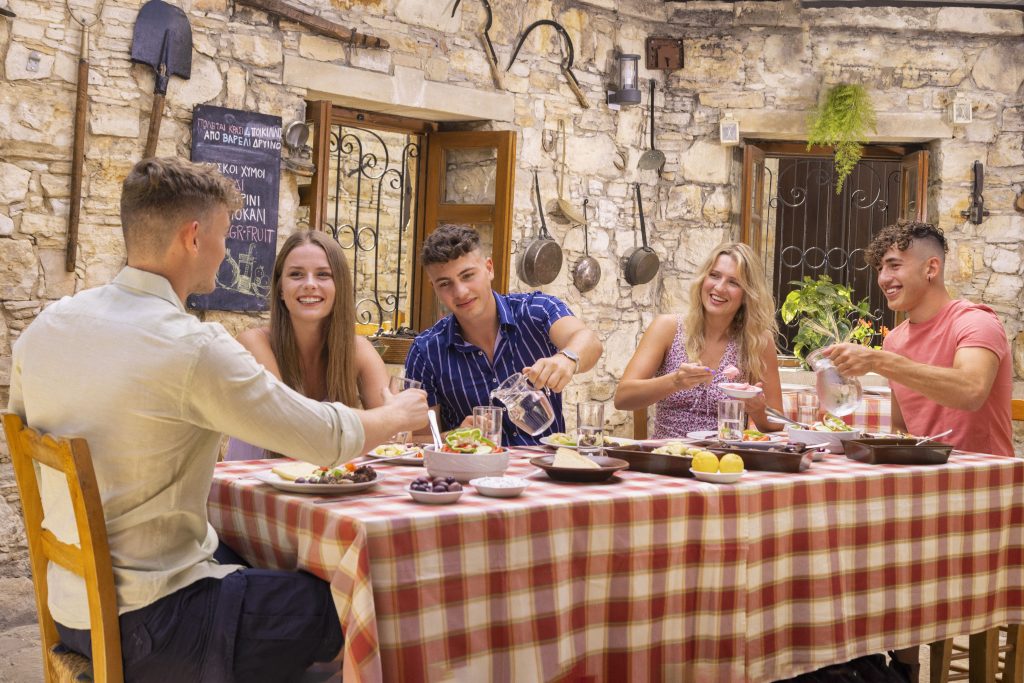
Whether religious or not, Easter in Cyprus is a superb time to get a taste of local life and be immersed in its culture by witnessing enduring and vibrant traditions. Happy Easter!


